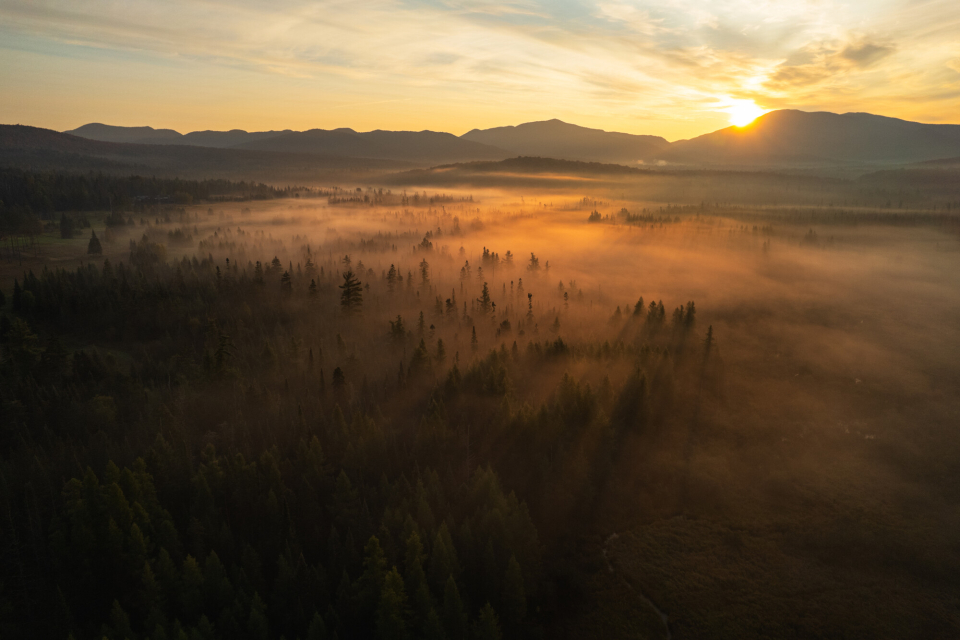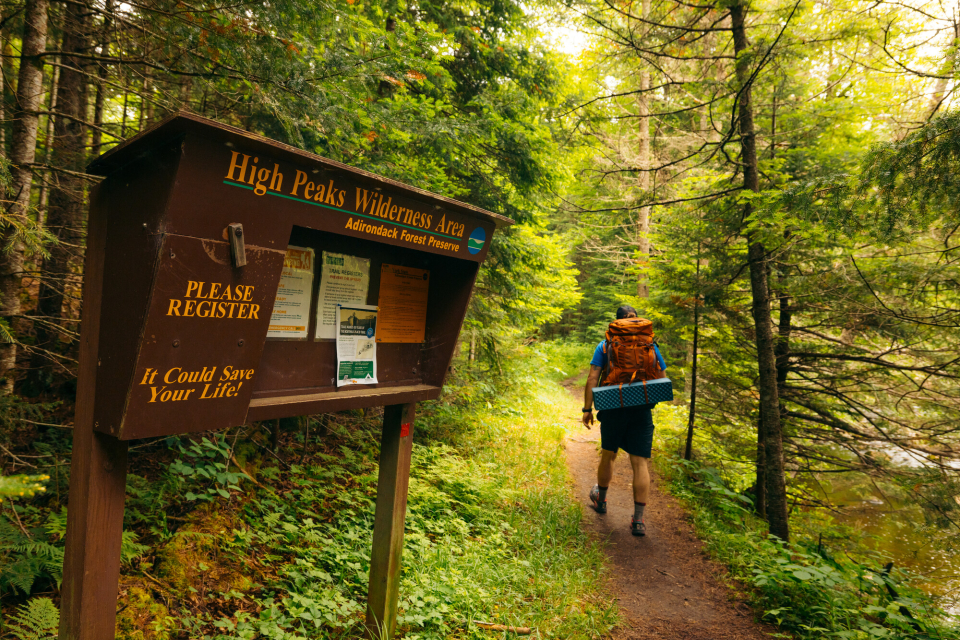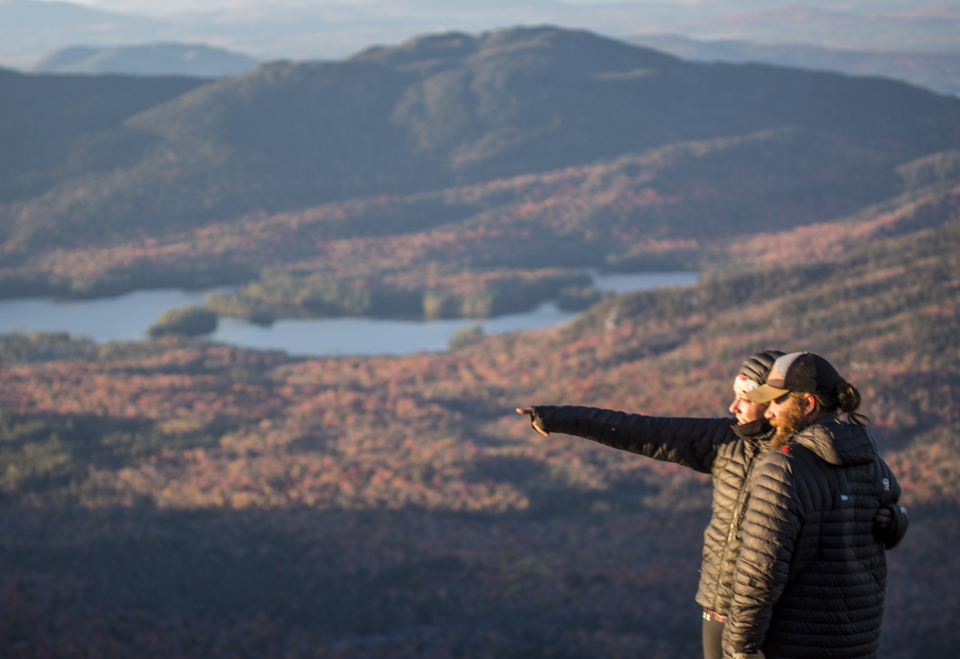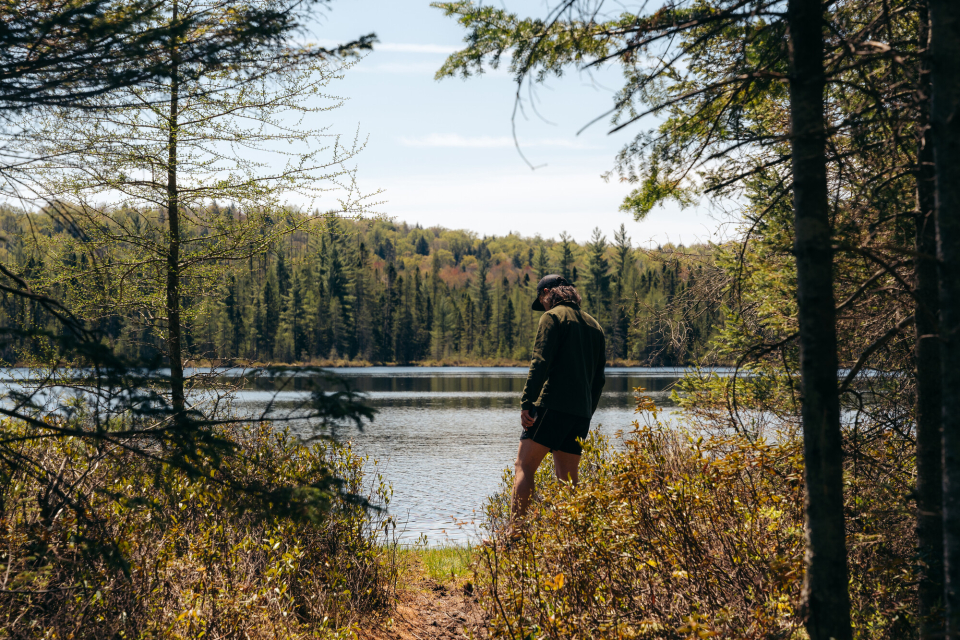High Peaks Wilderness Area




The High Peaks Wilderness Area is the largest Wilderness Area in the Adirondack Mountains and New York state. At 275,460 acres, the High Peaks Wilderness Complex includes Eastern (Central) and Western (Outer) zones, as well as the former Dix Mountain Wilderness Area, 11,411 of the Boreas Pond Tract, 4,418 acres of the MacIntyre East Tract, and 1,490 acres of the former Casey Brook Tract.
Hiking and camping in the High Peaks
From the highest peaks in New York state to extensive wetlands and river systems, the High Peaks has a diversity of landscapes to get out and enjoy. Much of the hikers and campers going to this Wilderness Area are hiking the Adirondack 46 High Peaks, part of a popular hiking challenge. Amongst those High Peaks are hundreds of others smaller mountains, trails that carve through their valleys, and campsites on bodies of water big and small. Whether you come to challenge yourself on a High Peak, or simply go on a short hike or scenic drive, you'll experience one of the most unique areas in the state.
With the increasing number of people recreating in the High Peaks, it's important to follow Leave No Trace principles, follow all guidelines for this specific Wilderness Area, and be prepared for whatever you decide to do in the Forest Preserve. Listed below are some important rules to remember.
- No campfires in the Eastern Zone of the High Peaks Wilderness Area
- Maximum of 15 people in a group for a day trip, and 8 people for an overnight
- No camping on summits or above 3,500 feet (except at lean-to)
- If necessary, at-large camping is allowed as long as sites are at least 150 feet from all roads, trails, bodies or bodies of water. Place your tent on a durable surface (hardened soil, leaf litter, pine duff). Do not place your tent on vegetation. Only at-large camp when no other designated site is available
- Bear canisters are required for all overnight campers in the Eastern Zone of the High Peaks Wilderness Area
- Carry out what you carry in. Properly dispose of waste and pack out all gear and garbage. Do not leave waste at trailheads.
- Dogs must be leashed at all times in the Eastern Zone of the High Peaks Wilderness and at trailheads, campsites, and above 4,000 feet everywhere else
- If accessing the High Peaks from the AMR trailhead, dogs are not allowed on AMR property.
- Bikes, drones, and ATVs are prohibited
- Skis and Snowshoes required when snow depths are at least 8 inches
- Reservations are required for parking, daily access, and overnight access at the Adirondack Mountain Reserve (AMR) between May 1 and October 31. Reservations can be made as early as two weeks in advance at hikeamr.org. Walk-ins are not permitted.
Popular trailheads to access the High Peaks:
- The Adirondack Loj and High Peaks Information Center at Heart Lake
- The Garden in Keene Valley
- Upper Works Trailhead in Newcomb
- Corey's Road between Tupper lake and Saranac Lake
- Northville-Placid Trail parking areas are located on Averyville Road and in Long Lake
Hunting in the High Peaks
The High Peaks might be best known for Mount Marcy, New York state’s highest peak, but hunting opportunities abound here, whether they be small or big game. Be aware this is true big woods hunting, and it’s best to be well-prepared before striking out.
The High Peaks Wilderness Area is the largest Wilderness Area in the Adirondack Mountains and New York state. At 275,460 acres, the High Peaks Wilderness Complex includes Eastern (Central) and Western (Outer) zones, as well as the former Dix Mountain Wilderness Area, 11,411 of the Boreas Pond Tract, 4,418 acres of the MacIntyre East Tract, and 1,490 acres of the former Casey Brook Tract.
Hiking and camping in the High Peaks
From the highest peaks in New York state to extensive wetlands and river systems, the High Peaks has a diversity of landscapes to get out and enjoy. Much of the hikers and campers going to this Wilderness Area are hiking the Adirondack 46 High Peaks, part of a popular hiking challenge. Amongst those High Peaks are hundreds of others smaller mountains, trails that carve through their valleys, and campsites on bodies of water big and small. Whether you come to challenge yourself on a High Peak, or simply go on a short hike or scenic drive, you'll experience one of the most unique areas in the state.
With the increasing number of people recreating in the High Peaks, it's important to follow Leave No Trace principles, follow all guidelines for this specific Wilderness Area, and be prepared for whatever you decide to do in the Forest Preserve. Listed below are some important rules to remember.
- No campfires in the Eastern Zone of the High Peaks Wilderness Area
- Maximum of 15 people in a group for a day trip, and 8 people for an overnight
- No camping on summits or above 3,500 feet (except at lean-to)
- If necessary, at-large camping is allowed as long as sites are at least 150 feet from all roads, trails, bodies or bodies of water. Place your tent on a durable surface (hardened soil, leaf litter, pine duff). Do not place your tent on vegetation. Only at-large camp when no other designated site is available
- Bear canisters are required for all overnight campers in the Eastern Zone of the High Peaks Wilderness Area
- Carry out what you carry in. Properly dispose of waste and pack out all gear and garbage. Do not leave waste at trailheads.
- Dogs must be leashed at all times in the Eastern Zone of the High Peaks Wilderness and at trailheads, campsites, and above 4,000 feet everywhere else
- If accessing the High Peaks from the AMR trailhead, dogs are not allowed on AMR property.
- Bikes, drones, and ATVs are prohibited
- Skis and Snowshoes required when snow depths are at least 8 inches
- Reservations are required for parking, daily access, and overnight access at the Adirondack Mountain Reserve (AMR) between May 1 and October 31. Reservations can be made as early as two weeks in advance at hikeamr.org. Walk-ins are not permitted.
Popular trailheads to access the High Peaks:
- The Adirondack Loj and High Peaks Information Center at Heart Lake
- The Garden in Keene Valley
- Upper Works Trailhead in Newcomb
- Corey's Road between Tupper lake and Saranac Lake
- Northville-Placid Trail parking areas are located on Averyville Road and in Long Lake
Hunting in the High Peaks
The High Peaks might be best known for Mount Marcy, New York state’s highest peak, but hunting opportunities abound here, whether they be small or big game. Be aware this is true big woods hunting, and it’s best to be well-prepared before striking out.
Packages and Promotions
Valid Dec. 1
- Dec. 1
Valid Dec. 1
- Dec. 1
Linger Longer in Saranac Lake
Best Western Saranac Lake
Linger Longer in Saranac Lake at our supremely located property, Best Western Saranac Lake. Stay 2 nights or more and get 15% off!




